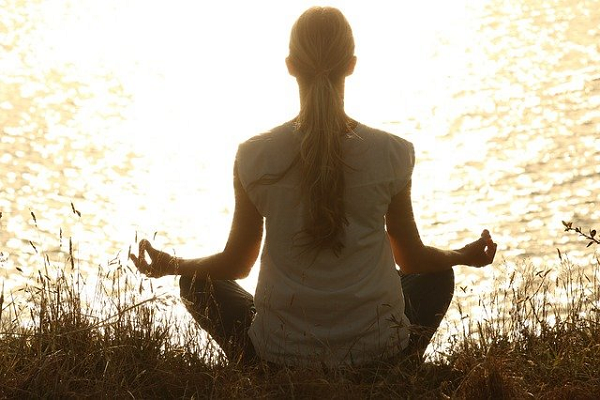Do you want to learn how to meditate but don’t know where to start? This guide will teach you the basics of meditation in a simple and easy-to-follow step-by-step format.

Meditation is a practice that has been around for centuries. It can be used to focus the mind and relieve stress. If you are new to meditation, this guide will help you get started.
What is Meditation?
Meditation is a form of mental relaxation that helps you focus and relax. It can be used to reduce stress, anxiety, and depression, as well as improve your concentration and sleep. Meditation is simple to do, and can be done anywhere at any time.
The Benefits of Meditation
1. Increased focus and concentration
2. Greater relaxation and stress relief
3. Improved mood and mental well-being
4. Greater sense of peace and tranquility
5. Enhanced spiritual awareness
A Step-by-Step Guide for Beginners(How To Meditate)
If you’re interested in learning how to meditate, this guide is for you. We’ll show you the basics of meditation, including how to find a comfortable position and practice regularly.
Find a Quiet Place
Finding a quiet place to meditate can be difficult, but it’s important to find a space where you won’t be disturbed. If possible, find a spot in your home that is free from noise and distractions. If you can’t find a quiet place at home, consider finding a meditation center or class.
Sit in a Comfortable Position
When you’re ready to start meditating, the first step is to find a comfortable position. There are many different ways to do this, but the most important thing is to find a position that’s comfortable for you. Some people prefer to sit in lotus position, while others may feel more comfortable sitting with their legs crossed. The important thing is to find a position that’s comfortable for you and allows you to focus on your breathing.
Close Your Eyes
When you are ready to begin mediation, the first step is to close your eyes. This will help to create a more focused and calming environment. Once you have closed your eyes, take a few deep breaths and let them out slowly. Next, focus on your breath and allow it to flow in and out of your body naturally. If you find that your mind is wandering, simply bring it back to your breath by focusing on the inhale and the exhale. Continue this process for as long as you feel comfortable. When you are finished meditating, simply open your eyes and take a few minutes to relax before continuing with the next steps of this guide.
Take a Deep Breath In and Out
When you are meditating, it is important to take deep breaths in and out. When you inhale, your body will relax. When you exhale, your mind will quiet and focus.
Focus on Your Breath As It Comes In and Goes Out
When you’re ready to start meditating, one of the first things you’ll want to do is focus on your breath. When you focus on your breath, it will help to center yourself and clear your mind. When your mind is clear, you can begin to meditate in any way that works best for you.
Let Go of Thoughts That Come to Mind
When you are meditating, it is important to let go of any thoughts that come to mind. This will help you focus on your breath and meditation. If you find yourself thinking about anything else, simply return your attention to your breath and continue focusing on the present moment.
Practice Meditation Every Day
One of the most important steps in learning how to meditate is to make it a regular habit. Some people find it helpful to practice meditation every day, while others may find that once a week is enough. The key is to find what works best for you and stick to it. There are plenty of guided meditation practices available online or at your local library, so there’s no excuse not to start practicing today!
Advanced Meditations
Advanced meditation techniques can be very helpful for those who are serious about practicing meditation. There are many different types of advanced meditation techniques, and each one can offer a different way to focus and connect with the mind. Some of the most popular advanced meditation techniques include breath work, mantra chanting, visualizations, and sound mediation. It is important to find a technique that works best for you and allows you to connect with your innermost thoughts and feelings.
Conclusion
Meditation can be a beneficial practice for your mind and body. It is important to find the right technique for you, but following these steps will help you get started.

